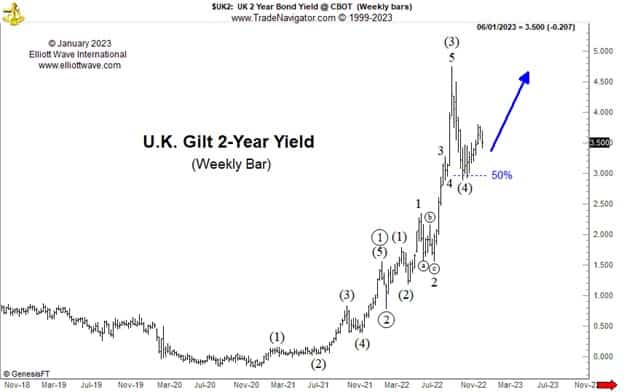Plastic Fantastic
Desperate U.K. consumers are turning to credit cards.
Consumer borrowing figures for November, released in the U.K. this week, showed a £1.2 billion increase in the use of credit cards, far above expectations. Having been steady-to-declining throughout 2022, credit card use has suddenly jumped to its highest monthly level since 2004. Why?
With social mood in a declining trend (to wit, the FTSE 250 index), this sudden jump in credit card use is not coming about because consumers feel extraordinary confident about the future. On the contrary, just as U.S. consumers have tapped out their credit cards as the saving rate drops, it is a sign that the decline in real wages is very likely causing people to turn to credit in an effort to maintain their standard of living. Times are increasingly desperate.
Even more worrying, though, is the fact that the cost of credit is much higher than it was a couple of years ago and remains on an upward trend. The next Bank of England Monetary Policy Committee Meeting to decide on the level of its policy interest (base) rate is in early February. The OId Lady hiked rates for the ninth time in a year at its meeting in December, warning of more to come, and so a pause would seem unlikely. However, it is worth noting that the 2-year Gilt yield is still lower than the October spike and so we should give a decent probability to a pause.
Nevertheless, as the Elliott wave labeling shows, short-end U.K. interest rates remain on an upward trend and so we can still anticipate a higher base rate from the Bank of England during 2023. U.K. consumers with higher debt bills to pay may then be singing along with the old Jefferson Airplane lyric, “But all I see is drainin’ me, On my plastic fantastic lover.” Such a situation should eventually prove to be untenable and result in even deeper debt-deflation.

